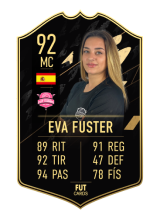1. The Science Behind Memory: Foundations and Mechanisms
Memory is not a passive recording but an active, dynamic process rooted in neural circuits. It unfolds in three stages: encoding, storage, and retrieval. During encoding, sensory input is transformed into neural representations through synaptic changes—a phenomenon known as synaptic plasticity. The hippocampus plays a pivotal role in consolidating short-term memories into stable long-term traces, while the amygdala imbues them with emotional significance, and the prefrontal cortex supports strategic retrieval and working memory. This triad enables us to learn, adapt, and navigate daily life with coherence.
2. Defining «{название}: Origin, Function, and Cognitive Role
Though “{название}” is a modern term, its essence echoes timeless cognitive principles. Etymologically, it derives from the Latin nomen—denoting name or label—symbolizing how the brain assigns identity to experiences. Functionally, «{название}» acts as a neural anchor: it categorizes incoming information, enhances recall by linking new data to existing networks, and governs attention through top-down control. Unlike fleeting sensory traces, «{название}» transforms transient signals into durable memory traces by reinforcing synaptic connections, especially in the medial temporal lobe.
3. Memory Systems and the Influence of «{название»
Memory operates across systems, and «{название}» bridges short-term and long-term storage. Working memory, mediated by the prefrontal cortex, maintains information temporarily—like holding a phone number—while «{название}» stabilizes it into long-term memory through rehearsal and consolidation. Interference and decay often arise when competing «{название» signals clash, or when absence of reactivation weakens neural pathways. For instance, the “tip-of-the-tongue” phenomenon reflects failed retrieval of a well-stored «{название» under retrieval pressure.
4. Neurochemical Underpinnings of «{название» in Memory
Neurotransmitters orchestrate the modulation of «{название» across brain regions. Dopamine, released during reward or novelty, strengthens synaptic links that embed meaningful «{название}»—critical in language learning or habit formation. Acetylcholine enhances attention and encoding precision, particularly in the hippocampus, while glutamate acts as the primary excitatory messenger, driving long-term potentiation (LTP), the cellular basis of memory. Human neuroimaging shows increased hippocampal activity during `{название}`-driven tasks, and pharmacological studies confirm acetylcholinesterase inhibitors improve verbal memory by boosting «{название}` clarity.
5. How «{название}» Shapes Memory Through Emotional and Contextual Cues
Emotion profoundly shapes «{название}` salience via amygdala-hippocampus interactions. Traumatic memories, for example, are often vivid and persistent because heightened amygdala activity amplifies encoding strength and storage durability. Context also matters: environmental cues associated with «{название}» activate distributed neural ensembles, facilitating retrieval. Yet this same sensitivity creates vulnerability—contextual mismatches or emotional triggers can distort or erase «{название}` traces.
- Emotional arousal increases amygdala-hippocampal coupling, strengthening memory consolidation.
- Context-dependent memory demonstrates that recall is enhanced when retrieval occurs in the same environment as encoding.
- Trauma-induced memory fragmentation illustrates how extreme emotional states impair accurate `{название}` formation, often leading to intrusive or distorted recollections.
6. The Impact of «{название}» on Memory Consolidation and Retrieval
Sleep is essential for `{название}` consolidation, during which hippocampal replay replays recent experiences, integrating them with existing knowledge. This reprocessing strengthens neural circuits critical for long-term retention. Retrieval itself reshapes memory—each act of recall reactivates and slightly modifies neural patterns, sometimes weakening irrelevant details and sharpening core `{название}` elements. Retrieval-induced forgetting further refines memory by suppressing competing codes, a mechanism evident in both animal models and human memory tests.
| Key Process | Role in Memory | Evidence / Example |
|---|---|---|
| Sleep Consolidation | Replays neural patterns, strengthening `{название}` | Rodent studies show hippocampal replay during slow-wave sleep enhances memory retention |
| Retrieval-Induced Forgetting | Reactivation emphasizes core `{название}`, suppresses distractions | Human memory tests demonstrate selective forgetting after targeted recall |
| Contextual Cueing | Cues trigger `{название}` retrieval via distributed networks | FMRI reveals hippocampal activation when familiar environments cue memory |
7. Real-World Examples: «{название}» in Action Across Domains
Consider language acquisition—each new word «{название}` is encoded in semantic networks, linking sound to meaning and context. This process mirrors synaptic strengthening seen in memory formation. In skill learning, procedural memory transforms conscious effort into automaticity through repeated `{название}` activation in basal ganglia circuits, enabling fluent performance without deliberate recall. Clinically, memory rehabilitation leverages `{название}`-focused training to restore function after brain injury, using cues to reactivate lost neural pathways.
- Language Learning: Repeated exposure to vocabulary «{название}` enhances recall by reinforcing hippocampal-cortical connections.
- Skill Mastery: Procedural «{название}` in motor tasks becomes automatized through corticostriatal plasticity.
- Clinical Use: Targeted `{название}` exercises aid memory recovery in Alzheimer’s patients by reactivating weakened circuits.
8. Common Misconceptions and Scientific Clarifications
A persistent myth is that memory records experiences like video—yet neuroscience confirms it reconstructs memories, often imperfectly and influenced by current context. The malleability of `{название}` explains why memories shift over time, susceptible to suggestion and emotional bias. This plasticity has profound implications: while it enables learning, it also fuels false memories. In education and therapy, recognizing this malleability guides effective strategies—emphasizing consistent, emotionally grounded encoding to stabilize `{название}` before decay or distortion.
- Memory is reconstructive, not reproductive—each recall reshapes the trace.
- Emotional and contextual factors actively mold `{название}`, not just passively tag them.
- False memories arise from `{название}` interference and post-event suggestion, not flawed recording.
9. Future Directions: Enhancing Memory Through Understanding «{название}»
Emerging tools like optogenetics allow precise manipulation of memory circuits, enabling selective activation or suppression of `{название}`-related neurons in animal models. AI models inspired by neural encoding patterns aim to predict and enhance memory formation, while neurofeedback trains individuals to regulate hippocampal activity during encoding. Ethically, leveraging `{название}` insights demands caution—while enhancing memory holds promise, altering identity through memory modification raises significant concerns.
As research advances, «{название}` remains a powerful lens to explore memory’s biological and psychological dimensions, bridging ancient cognitive principles with cutting-edge science.
10. Link to Real-World Application
Understanding how `{название}` shapes memory offers practical tools for education, therapy, and personal growth. For learners, spaced repetition and emotionally rich contexts strengthen `{название}` durability. For therapists, trauma-focused approaches target `{название}` reconsolidation to reduce distress. These insights echo broader truths: memory is malleable, context-dependent, and deeply human.
BeGamblewareSlots: How Transparency Shapes Responsible Choices

